- myFICO® Forums
- FICO Scoring and Other Credit Topics
- Understanding FICO® Scoring
- Re: Utilization - per card or overall?
- Subscribe to RSS Feed
- Mark Topic as New
- Mark Topic as Read
- Float this Topic for Current User
- Bookmark
- Subscribe
- Mute
- Printer Friendly Page
Utilization - per card or overall?
Is your credit card giving you the perks you want?
Browse credit cards from a variety of issuers to see if there's a better card for you.
- Mark as New
- Bookmark
- Subscribe
- Mute
- Subscribe to RSS Feed
- Permalink
- Report Inappropriate Content
Re: Utilization - per card or overall?
Payment less than reported balance => revolver designation for that account for the duration of the behavior.
Currently such designations are not looked at in scoring. However, reporting a high balance relative to credit limit is a score factor
Fico 8: .......EQ 850 TU 850 EX 850
Fico 4 .....:. EQ 809 TU 823 EX 830 EX Fico 98: 842
Fico 8 BC:. EQ 892 TU 900 EX 900
Fico 8 AU:. EQ 887 TU 897 EX 899
Fico 4 BC:. EQ 826 TU 858, EX Fico 98 BC: 870
Fico 4 AU:. EQ 831 TU 872, EX Fico 98 AU: 861
VS 3.0:...... EQ 835 TU 835 EX 835
CBIS: ........EQ LN Auto 940 EQ LN Home 870 TU Auto 902 TU Home 950
- Mark as New
- Bookmark
- Subscribe
- Mute
- Subscribe to RSS Feed
- Permalink
- Report Inappropriate Content
Re: Utilization - per card or overall?
@Thomas_Thumb wrote:Payment less than reported balance => revolver designation for that account for the duration of the behavior.
Currently such designations are not looked at in scoring. However, reporting a high balance relative to credit limit is a score factor
Hi TT! That may go further than we know to be true. That implies that (for these R/T models being developed) a person could have a history of acting a lot as a revolver in the past, but that such history would be disregarded if he paid his accounts off. He would (if that is true) be considered just as much a transactor as a person who had never once been a revolver (since his revolving behavior had ceased).
It's fair to guess that any R-T model will classify a person who has stopped revolving as less of a revolver than one who is still revolving. But the model might well take into account the fact that the person who once revolved might revolve again.
- Mark as New
- Bookmark
- Subscribe
- Mute
- Subscribe to RSS Feed
- Permalink
- Report Inappropriate Content
Re: Utilization - per card or overall?
Food for thought:
The transactor/revolver behavior, by its nature must look at accounts individually. Some accounts may show transactor behavior and some may show revolver behavior. Some may be stone cold dead. A robust model should consider this in its analysis. My guess is revolver analysis may be akin to looking at utilization on a per card basis and in aggregate with a slight twist - limited, weighted average memory.
There may be some memory - like inquiries. Perhaps if you showed revolver behavior in a given month, you maintain a revolver designation on that card until 6 months of transactor behavior - then the revolver "tag" falls off. However, that creates chunky scoring.
A better option would be to look at a 6 month weighted aggregate average of (total months revolver tag all cards/total months all cards) with more weight given to recent months. Months where cards reporting zero balance may or may not be included in the total months. I would opt for exclusion as that then negates the artificial benefit of getting a boatload of dead cards to drive down ratio.
Of course, if you employ NRB525 tactics you could be a rising star. ![]()
Fico 8: .......EQ 850 TU 850 EX 850
Fico 4 .....:. EQ 809 TU 823 EX 830 EX Fico 98: 842
Fico 8 BC:. EQ 892 TU 900 EX 900
Fico 8 AU:. EQ 887 TU 897 EX 899
Fico 4 BC:. EQ 826 TU 858, EX Fico 98 BC: 870
Fico 4 AU:. EQ 831 TU 872, EX Fico 98 AU: 861
VS 3.0:...... EQ 835 TU 835 EX 835
CBIS: ........EQ LN Auto 940 EQ LN Home 870 TU Auto 902 TU Home 950
- Mark as New
- Bookmark
- Subscribe
- Mute
- Subscribe to RSS Feed
- Permalink
- Report Inappropriate Content
Re: Utilization - per card or overall?
We'll certainly have a better idea next fall, since Fannie Mae is implementing this next summer. The NYT article implies that there will be a lot more than six months of memory in their algorithm. Thirty months is what the article says.
The fascinating problem for any such model is how to assess people who are mixed. If someone has always been a transactor on every tradeline -- or someone has always or nearly always revolved -- then it is easy for such a model to classify them as a strong T or R. The interesting problem for the developers is how to classify people in between (like jlynn0819 in this thread, who often is a T but is currently acting as an R on one account).
The practical solution in all likelihood for somebody like jlynn (someone who wants to prepare for a house purchase but also continue with some limited revolving behavior) is to act in ways that are different from the other high-risk revolvers -- to distinguish herself from them. The highest risk revolvers are the ones who typically only pay the minimum balance and who are not steadily paying down their revolving balance. So right there she can seperate herself from them and hopefully the model will be able to see that.
And as you suggested, if she can stop revolving altogether on the account in question (i.e. pay it off and then begin transacting) a solid 3-4 months before underwriting that will also help a lot, in all likelihood.
- Mark as New
- Bookmark
- Subscribe
- Mute
- Subscribe to RSS Feed
- Permalink
- Report Inappropriate Content
Re: Utilization - per card or overall?
I have not read the article but a 36 month time horizon creates a stronger argument for some type of "weighted behavior by month accounting".
Perhaps there will be a categorical rating associated with the metric.
Fico 8: .......EQ 850 TU 850 EX 850
Fico 4 .....:. EQ 809 TU 823 EX 830 EX Fico 98: 842
Fico 8 BC:. EQ 892 TU 900 EX 900
Fico 8 AU:. EQ 887 TU 897 EX 899
Fico 4 BC:. EQ 826 TU 858, EX Fico 98 BC: 870
Fico 4 AU:. EQ 831 TU 872, EX Fico 98 AU: 861
VS 3.0:...... EQ 835 TU 835 EX 835
CBIS: ........EQ LN Auto 940 EQ LN Home 870 TU Auto 902 TU Home 950
- Mark as New
- Bookmark
- Subscribe
- Mute
- Subscribe to RSS Feed
- Permalink
- Report Inappropriate Content
Re: Utilization - per card or overall?
@Hevj1119 wrote:Hey all
I'm having a hard time figuring out how badly a few balances are affecting my credit score. I have 2 cards with very high utilization (51% and 87% respectively) but since they are 0% financing for 12 months, I am not in any rush to pay off the balances - just making 12 equal payments.
Overall though, I have 8 other accounts with 0% utilization (with relatively high limits) so my average utilization is only 16%.
So is credit karma correct? Has my score tanked from the high 700s to the mid 600s because of these 2 cards having high utilization? Or does FICO look at my OVERALL utilization and not per card?
FICO looks at both.
If you have high utilization on particular cards, that loses points.
If you have high overall utilization, that loses points as well.
The fact that they're financially rewarding zero interest balances is meaningful to you but meaningless to your FICO score.
So if the FICO scores are a priority for you, then you need to forego large promotional balances.



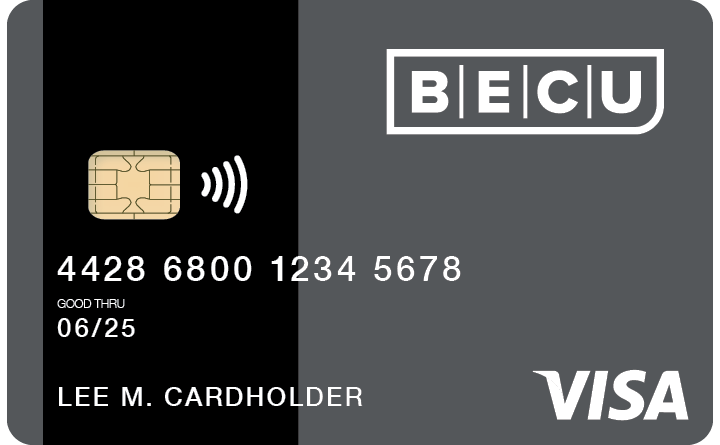










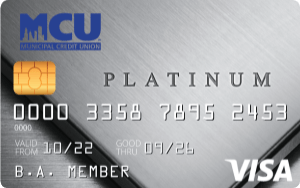




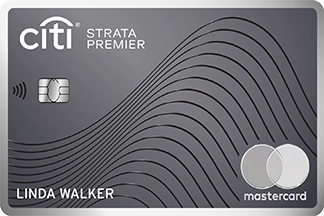

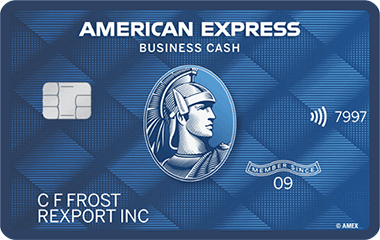




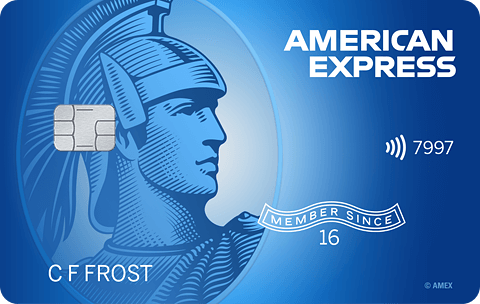
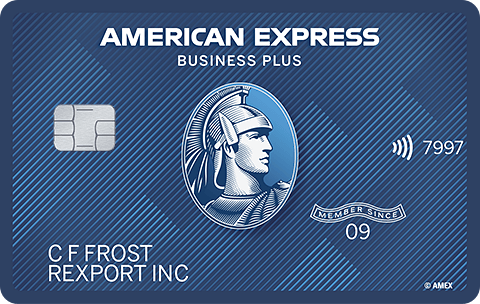



Total revolving limits 568220 (504020 reporting) FICO 8: EQ 689 TU 691 EX 682
- Mark as New
- Bookmark
- Subscribe
- Mute
- Subscribe to RSS Feed
- Permalink
- Report Inappropriate Content
Re: Utilization - per card or overall?
@Anonymous wrote:To the OP:
You wanted someone to expand a little on the advantages of Paying In Full of PIF. Olehammer mentioned that this might have some very particular advantages of its own.
First it's good to be clear about what how we are using the phrase. In what follows I am going to assume that, to pay in full means to make charges, allow them to report on your monthly statement, allow the statement to post (where there will be an "Amount owed"), and then AFTER the statement posts but before it is due, pay the amount owed in full. E.g. if the amount owed listed on the statement is $425, then you pay $425. Note that in this example the credit card company (CCC) will have reported your $425 balance to the three credit bureaus. Note also that by the time you pay the $425, your balance may be higher than $425, because you may have made more charges. That's no problem and is normal.
Finally, note that this definition of PIF is not the same as paying your balance down to $0 BEFORE the statement posts. In that case, you have no balance, no Amount Owed on your statement, and therefore nothing you must pay. To pay in full means to pay the amount owed in full. To PIF therefore typically refers to allowing your statement to report a positive balance and then in the next few weeks, to pay that amount.
So what are the advantages?
First of there are the obvious financial advantages. It you PIF, then you never pay any interest.
Second, you create a payment history. Your credit reports now record what your balance was every month for many months in a row. (Until recently, they only recorded your most recent balance.) More than that, for each month, your reports record how much of that balance you later paid. That means that future lenders will be able to see whether you tend to always PIF. People who adopt that style are known as transactors. At the other end of the spectrum are people who rarely PIF. These people only pay a part of the total amount owed. They carry the remainder over to the next month. (This is called carrying a balance.) People who often carry a balance are known as revolvers.
In the last several years, analysts have studied the risk levels posed by people who always PIF (transactors) vs. people who often carry a balance (revolvers). It turns out that revolvers are far more risky, far more likely to default, for example, than transactors.
Current and past FICO models never incorporated this transactor-revolver distinction into credit scores, but that's only because until recently the credit bureaus weren't collecting that long term payment history. (As I mentioned, until recently, they only collected the most recent balance.) But future credit scoring models very well may consider this, which is why people who begin establishing a history in their accounts as being transactors will have an advantage.
Furthermore, this change is happening far quicker than many of us expected. Fannie Mae is requiring all mortgage lenders to begin factoring this in to their decisions (starting next year). Other lenders may already be doing that. Here is an article that explains more of what will be happening as early as next year:
Let me know if that helps!
Thanks for sharing that, CreditGuy..... very interesting article. Since I'm the kind of person that hates carrying balances, regardless of interest rate, it looks like good news for me.































Total revolving limits 568220 (504020 reporting) FICO 8: EQ 689 TU 691 EX 682
- Mark as New
- Bookmark
- Subscribe
- Mute
- Subscribe to RSS Feed
- Permalink
- Report Inappropriate Content
Re: Utilization - per card or overall?
Fascinating stuff and an amazing explanation/analysis by CreditGuyInDixie (kudos to you, sir!). However, I'm a bit puzzled by the following sentence in the NYT article-
It [trended data] is already a popular tool for evaluating auto loan and credit card applicants, according to Steve Chaouki, TransUnion’s executive vice president at the financial services business unit.
Earlier posts in this thread imply that Transactor/Revolver status cannot currently be determined. If that's the case, then how is it already a "popular tool" for auto and CC decisions?
I'm totally open to being completely wrong here, but doesn't the above quote imply that T/R status is already a part of current FICO models, and the only new development rolling out is its use in Fannie Mae mortgage decisions? Possibly implying that mortgage lenders will simply be moving from their current use of FICO 04 models to FICO 08 models.
- Mark as New
- Bookmark
- Subscribe
- Mute
- Subscribe to RSS Feed
- Permalink
- Report Inappropriate Content
Re: Utilization - per card or overall?
@Aahz wrote:Fascinating stuff and an amazing explanation/analysis by CreditGuyInDixie (kudos to you, sir!). However, I'm a bit puzzled by the following sentence in the NYT article-
It [trended data] is already a popular tool for evaluating auto loan and credit card applicants, according to Steve Chaouki, TransUnion’s executive vice president at the financial services business unit.Earlier posts in this thread imply that Transactor/Revolver status cannot currently be determined. If that's the case, then how is it already a "popular tool" for auto and CC decisions?
I'm totally open to being completely wrong here, but doesn't the above quote imply that T/R status is already a part of current FICO models, and the only new development rolling out is its use in Fannie Mae mortgage decisions? Possibly implying that mortgage lenders will simply be moving from their current use of FICO 04 models to FICO 08 models.
That's a great question, Aahz. Chaouki's claim does not imply that the T/R distinction is part of current FICO models, though I can see why you might think it does.
It only would if FICO 8 was the only tool on the market for evaluating consumer credit.. But it isn't. TransUnion, for example, makes and sells its own tools, and according to the NYT piece, Fannie Mae has partnered with TU and is going to be incorporating TU's trended data analysis technology into FM's flagship underwriting product ("Desktop Underwriter").
There's also a legitimate question to raise about whether Chaouki (who works for TU) might be exagerating the extent to which his company's technology has penetrated into widespread use. Remember he's a VP of a unit that sells of financial services. The following are all possible:
* He's exagerating a lot.
* He's not exagerating but he's allowing the reader to assume that popular means widely used for making formal decisions (when that might not be so). It might mean popular in the sense of big lenders using it in an evaluative phase, comparing it against traditional methods, but not using it formally yet to render decisions about customers.
* He's basically right.
The important idea to bear in mind is that anybody who pulls credit reports (which includes auto lenders, CC issuers, mortgage lenders, etc.) can in principle see the trended data. The data have been there for a few years. It's the analytic tools to categorize consumers along a T-R continuum that are a bit more recent. But even those are only needed if you are trying to do it in some highly sophisticated and standardized way. You yourself could look at someone's report and determine pretty easily how much of a T or an R they are, just by eyeballing the monthly balances and amounts paid on their CCs. If you can do it, then it's quite possible that Amex or Toyota or Chase has hired a few statisticians and developers to design a tool to do that in house. Or that they bought a specialized product from someone to do it.
And I have no doubt that FICO is working on that as we speak. They may be even selling new specialized products to do it, for example. But making a big change to existing models (e.g. FICO 8, which was released several years ago) and then not telling anyone is very unlikely.
I am even a bit doubtful that the T-R distinction is in FICO 9, simply because there was a huge amount of press coverage last year over FICO 9, where FICO was very open about the changes in it, and there wasn't a murmur about that.
Nonetheless there seems no doubt that this distinction will be important, and sooner than many of us guessed. That's why I think it makes sense for any (savvy) consumer to begin trying to develop a history of being a transactor if he can.
- Mark as New
- Bookmark
- Subscribe
- Mute
- Subscribe to RSS Feed
- Permalink
- Report Inappropriate Content
Re: Utilization - per card or overall?
I wouldn't be surprised if Fico 9 and VS 3 both have subroutines that incorporate the T/R feature - but the subroutine was "turned off" when rolled out for general scoring. Alternatively, - these models may have been set-up to allow future inclusion as a bolt on addition. Could be a 3rd party application.
Here is an interesting paper I just came across on T-R modeling which appears well thought out and robust.
http://support.sas.com/resources/papers/proceedings15/3217-2015.pdf
Fico 8: .......EQ 850 TU 850 EX 850
Fico 4 .....:. EQ 809 TU 823 EX 830 EX Fico 98: 842
Fico 8 BC:. EQ 892 TU 900 EX 900
Fico 8 AU:. EQ 887 TU 897 EX 899
Fico 4 BC:. EQ 826 TU 858, EX Fico 98 BC: 870
Fico 4 AU:. EQ 831 TU 872, EX Fico 98 AU: 861
VS 3.0:...... EQ 835 TU 835 EX 835
CBIS: ........EQ LN Auto 940 EQ LN Home 870 TU Auto 902 TU Home 950